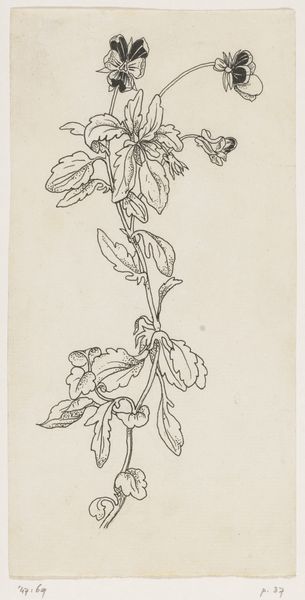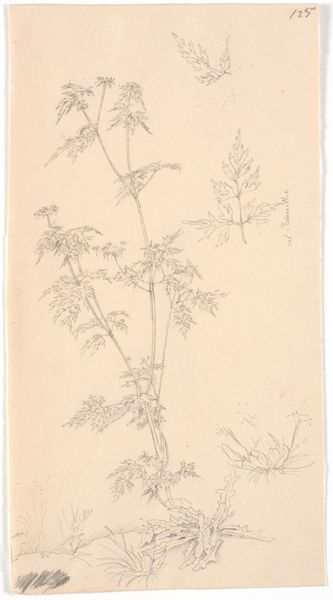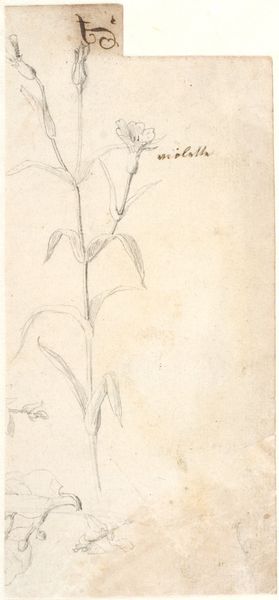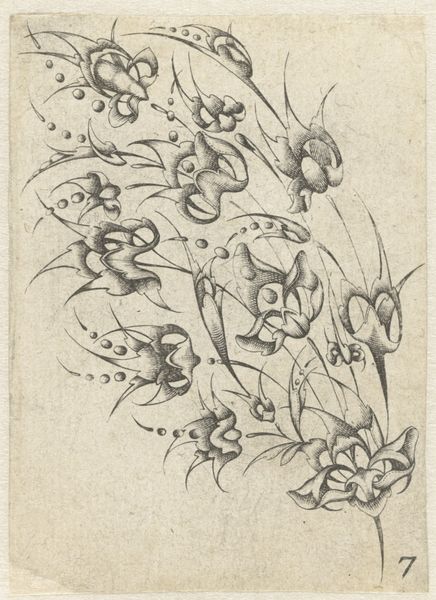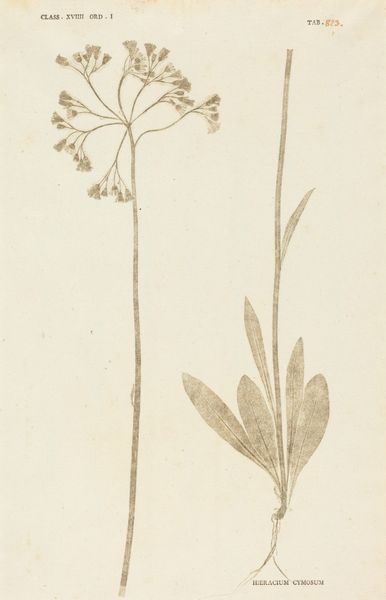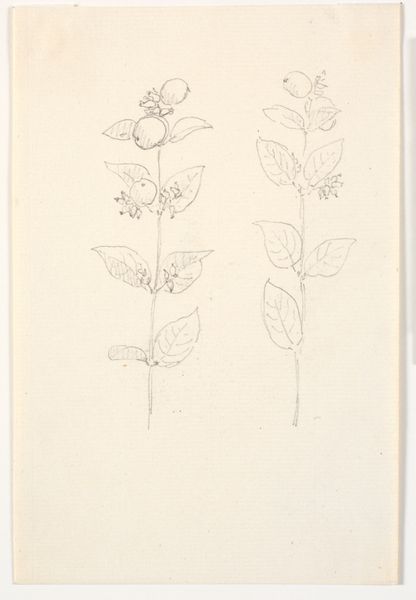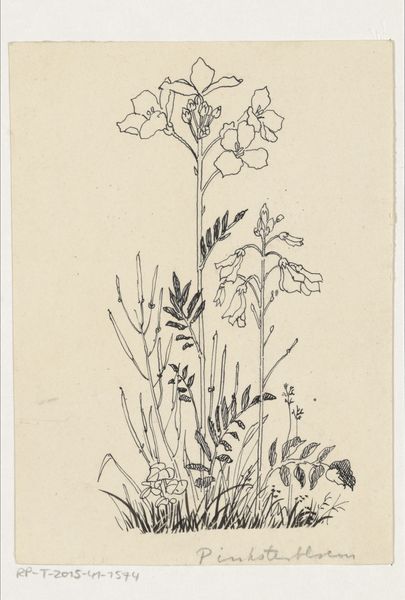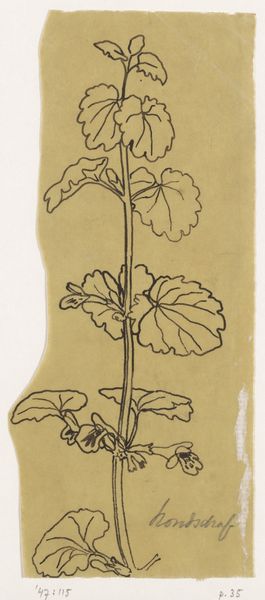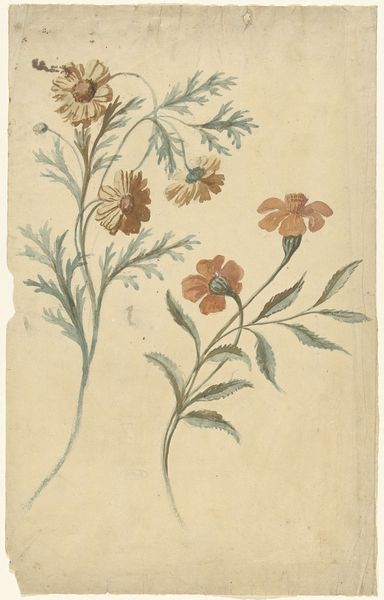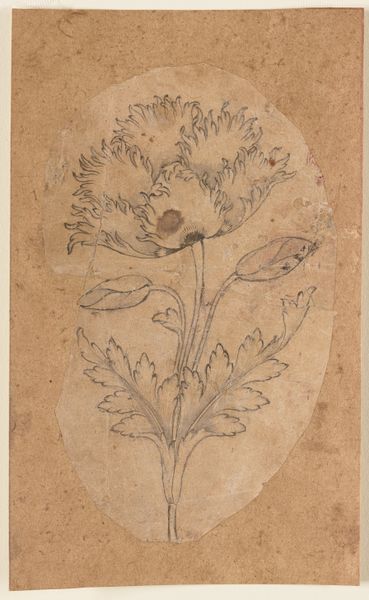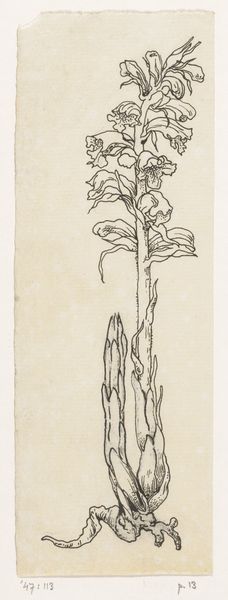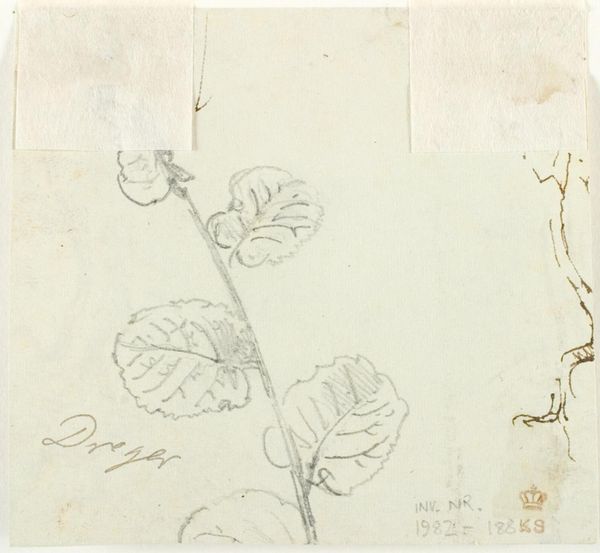
drawing, paper, pen
#
drawing
#
pen sketch
#
asian-art
#
paper
#
line
#
pen work
#
pen
Dimensions: height mm, width mm
Copyright: Rijks Museum: Open Domain
Curator: Looking at this, I immediately think of resilience. The delicacy of the pen line contrasted with the upright strength of the floral arrangement. Editor: That’s an interesting take! What we have here is a pen drawing on paper from around 1800 by Sasaya titled "Chrysanten", that's Chrysanthemum in English. At first glance, the minimalist composition seems very characteristic of that time in Japanese art. Curator: Yes, it's remarkable how few lines convey the essence of the Chrysanthemum, a flower laden with symbolic meaning in many East Asian cultures. The flower heads, those sun-like shapes, almost give off a solar vibe. Is it a celebration of light, life, and possibly, imperial power given its association with the Japanese Imperial family? Editor: It’s intriguing you bring up imperial power. It reminds me of the Meiji Restoration. Prior to that era, Japanese art often functioned as a coded visual language, reflecting the socio-political undercurrents that affected both artist and audience. This flower, particularly if gifted or displayed publicly, might’ve reinforced cultural values or even allegiances. Curator: The way Sasaya chose to render it adds to that layer of potential significance, the precise yet freehand execution speaks to something almost ceremonial in artistic creation. It doesn't just capture likeness. The drawing feels alive with symbolic weight. Editor: Agreed. We need to remember that this piece, while beautiful in its simplicity, existed in a world rife with societal norms and expectations. So understanding its creation means thinking beyond personal aesthetics and factoring in the surrounding political climate. The art world doesn’t operate in a vacuum. Curator: True enough. But that dance between societal expectations and the artist’s interpretation is what makes art endlessly fascinating. Editor: Indeed. Works like this "Chrysanten" can trigger contemplation, both for their inherent artistry and the silent dialogues they host between past and present.
Comments
No comments
Be the first to comment and join the conversation on the ultimate creative platform.
